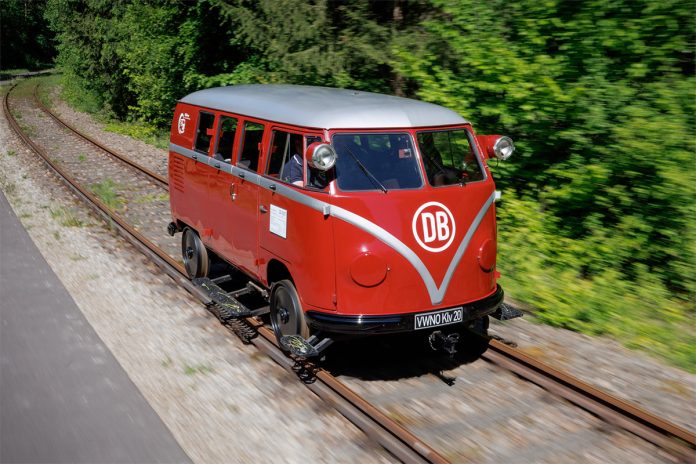Volkswagen’s Classic Vehicles department, known as Volkswagen Commercial Vehicles Oldtimer (VWNO), has once again unearthed a remarkable piece of automotive history. Following their previous discovery of the Half-Track Fox, a Volkswagen Bulli converted for off-road use, VWNO proudly presents the Bulli rail bus from 1955, also known as the Klv-20. This unique vehicle, a fascinating blend of a train and a VW bus, is an original “barndoor” Bulli that operates solely on rails. It was showcased at the inaugural Bulli & Coffee event in Hanover on June 2, 2024, celebrating International VW Bus Day.
The genesis of the Klv-20
In 1954, the Deutsche Bundesbahn (German Federal Railway) faced the challenge of acquiring new compact service vehicles for their railways. Instead of designing a new vehicle from scratch, they opted to adapt the versatile Volkswagen Transporter with a rail chassis. Two companies, Martin Beilhack (Rosenheim) and Waggon- und Maschinenbau GmbH Donauwörth, were tasked with building these vehicles. Within a year, each company converted 15 units for rail use. The vehicle now in the VWNO collection was manufactured by Beilhack.
Functional and versatile design
The Klv-20s were primarily used at rail and signal maintenance depots for inspection and repair trips. Remarkably, these vehicles remained in service until the 1970s. Today, only a few of these vehicles remain in running order, with VWNO’s Klv-20, number 20-5011, being in exceptionally good condition.
The Klv-20 is composed of three main components: the body of a T1 Kombi, a 21 kW/28 PS Volkswagen industrial engine, and a chassis with a hydraulic lifting/turning mechanism. This ingenious mechanism allowed the vehicle to be lifted, turned around, and placed back on the rails by a single person, eliminating the need to drive back in reverse. This feature made the Klv-20 highly flexible and efficient for rail operations.
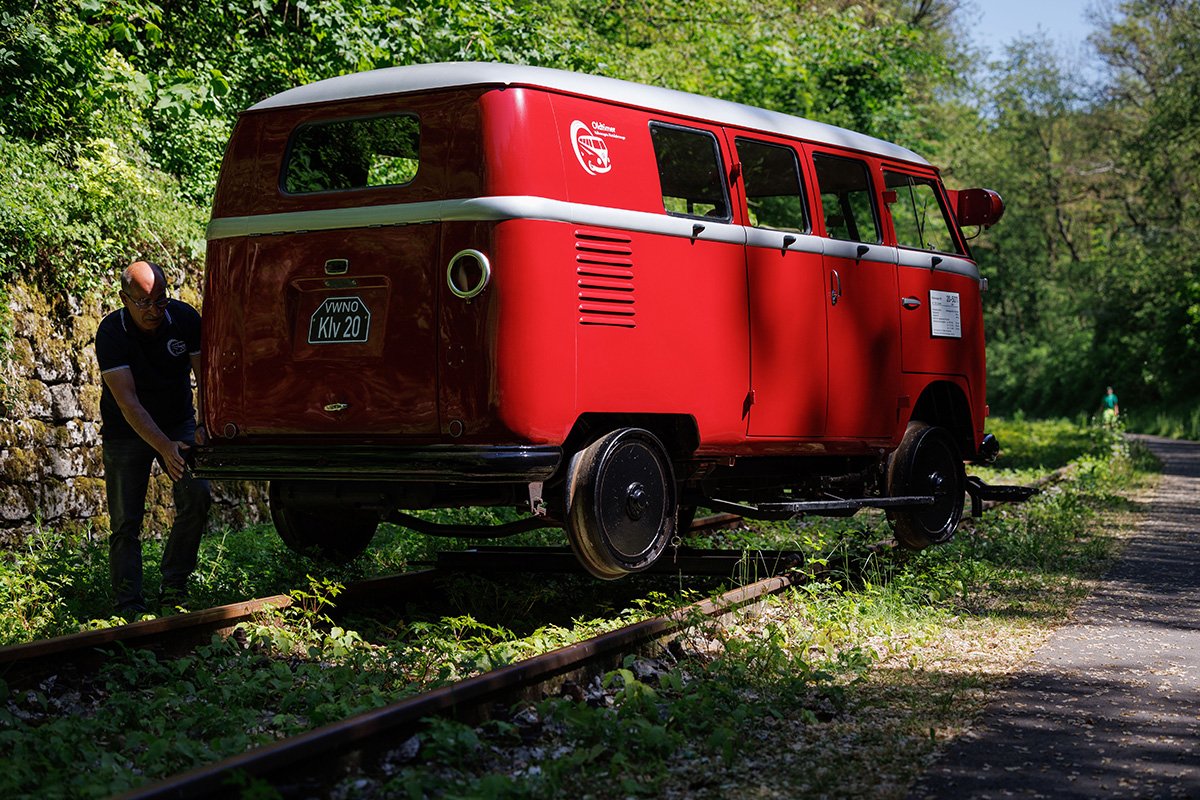
Unique features for rail compliance
To comply with regulations for auxiliary railway vehicles, the Klv-20 had its front lights removed and replaced with metal panels. The standard rail vehicle lights were then installed in new positions: two white lamps at the front and one red lamp at the rear. This ensured that the vehicle met all necessary safety and operational standards for rail use.
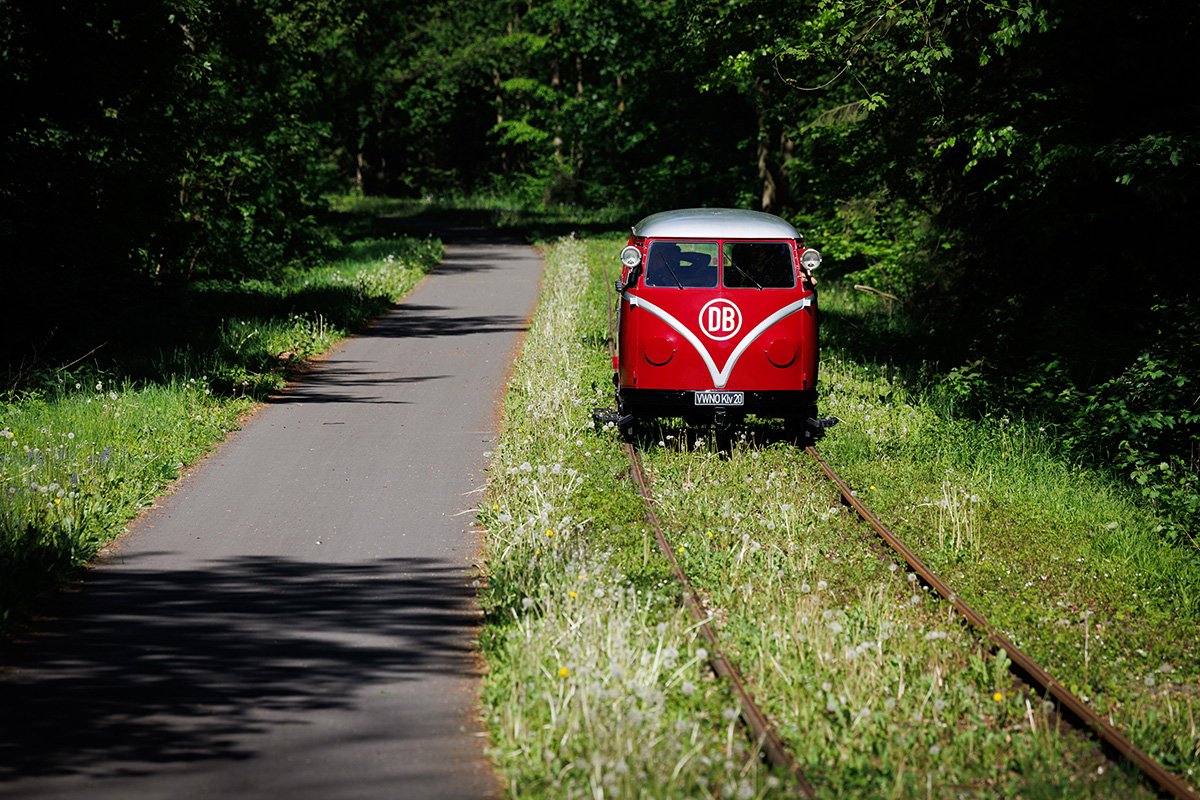
A journey through history
VWNO’s Klv-20 began its service at the rail depot in Plattling, Bavaria, later moving to the Plattling signal maintenance depot. After being decommissioned in the 1970s, it found a new home in the Palatinate region in southwest Germany. In 1988, a railway collector in the state of Hesse acquired it. Now, this unique vehicle is part of Volkswagen Commercial Vehicles’ classic collection in Hanover.
Technical specifications
The Klv-20 is described in an original sales brochure as a “rail track vehicle for universal use.” It features a four-cylinder four-stroke petrol engine, a four-speed manual gearbox, and a chassis made from strong sectional steel. The wheels are made of steel with rubber elements to reduce noise, and the vehicle is equipped with internal shoe brakes activated by an oil-hydraulic system.
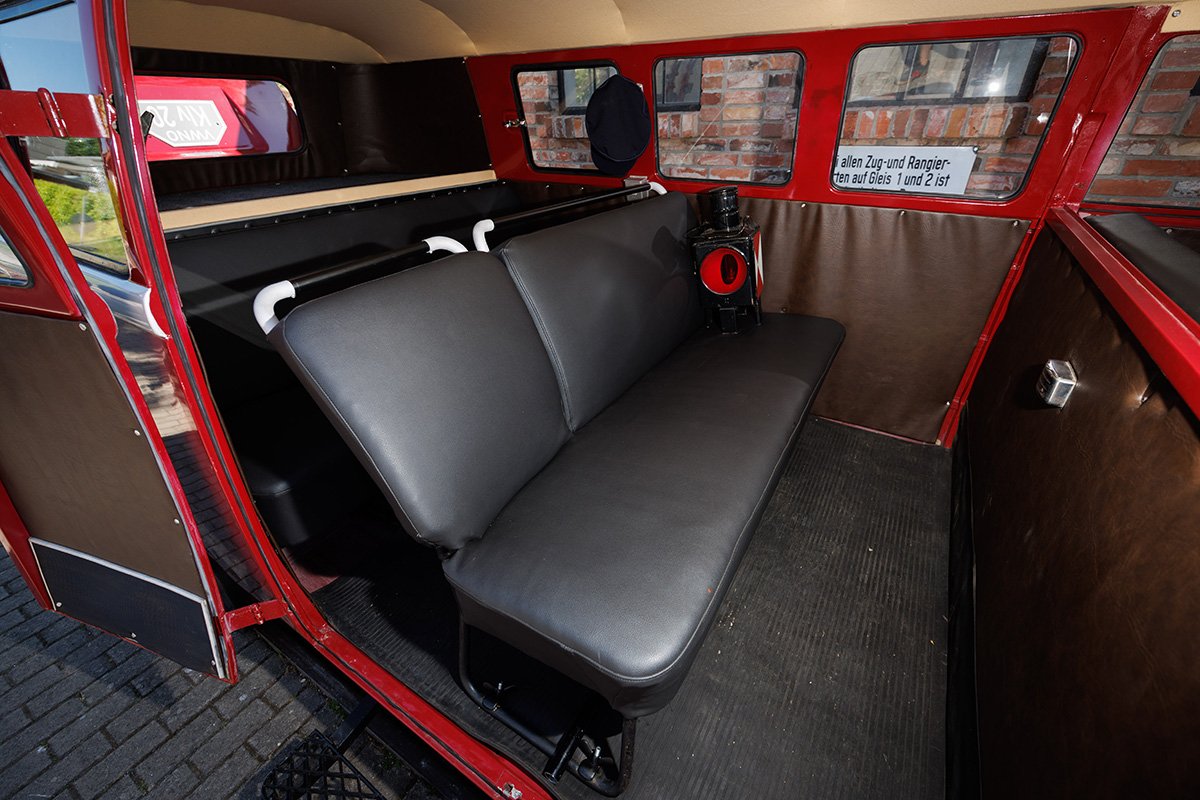
The body of the Klv-20 is connected to the frame by rubber elements, housing three well-upholstered seat benches: one in the driver’s compartment and two in the passenger compartment. The benches in the passenger area can be removed to transport goods. The vehicle also includes a hydraulic lifting and turning device operated by a hand pump, enabling effortless direction changes.
Experiencing the Klv-20
Driving the Klv-20 is a unique experience, notably because it lacks a back-view mirror and a steering wheel—unfamiliar features for Bulli fans but typical for train enthusiasts. The initial drive is surreal, but one quickly becomes accustomed to the steady rumbling of the tracks, enjoying the passing landscape.
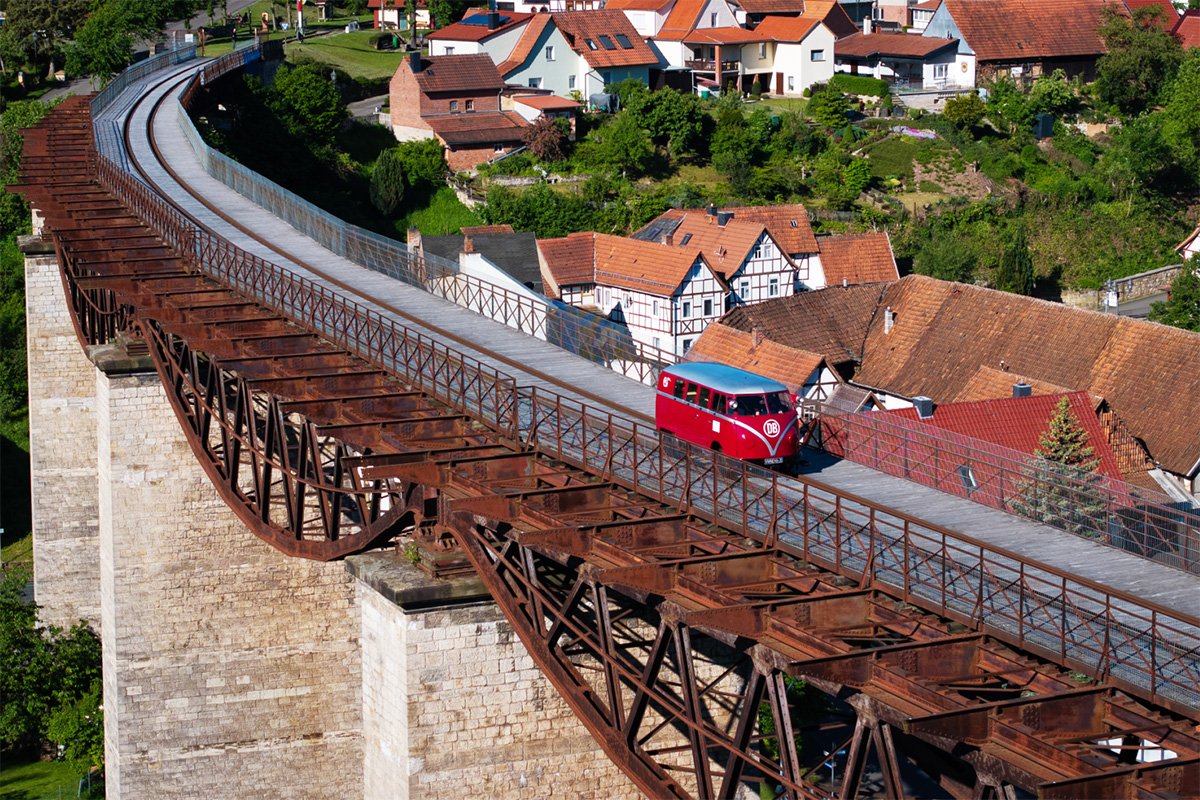
The Klv-20 had its first outing on the picturesque draisine track in Lengenfeld unterm Stein. Tobias Twele from Volkswagen Commercial Vehicles Oldtimer described this journey as a moving experience for the team, emphasizing the emotional moment when they drove over the 24-meter-high viaduct for the first time. During this trip, they traveled over 32 kilometers of track, including five kilometers through tunnels and climbing 154 meters, crossing the impressive 244-meter-long Lengenfeld Viaduct multiple times.
Technical details at a glance
- Base: VW Kombi (T1)
- Year of manufacture: 1955
- DB type: 200-1A-bm1
- Engine: Volkswagen industrial engine, four-cylinder boxer engine
- Capacity: 1,192 cc
- Output: 21 kW / 28 hp
- Top speed: 70 km/h
- Number of seats: 7 (including driver)
- Length: Approximately 4,100 mm
- Width: Approximately 1,750 mm
- Height above rails: Approximately 1,850 mm
- Wheelbase: 2,400 mm (same as road version)
- Weight: Approximately 1,550 kg
- Payload: 670 kg
- Gross vehicle weight rating: 2,220 kg
- Track width: 1,435 mm
- Wheel diameter: 550 mm
The modern-day Bulli enthusiast
For those who appreciate unique and historical vehicles, the Klv-20 offers an extraordinary look into Volkswagen’s past. It represents a time when innovation and practicality came together to solve real-world problems, in this case, providing a versatile service vehicle for the German Federal Railway.
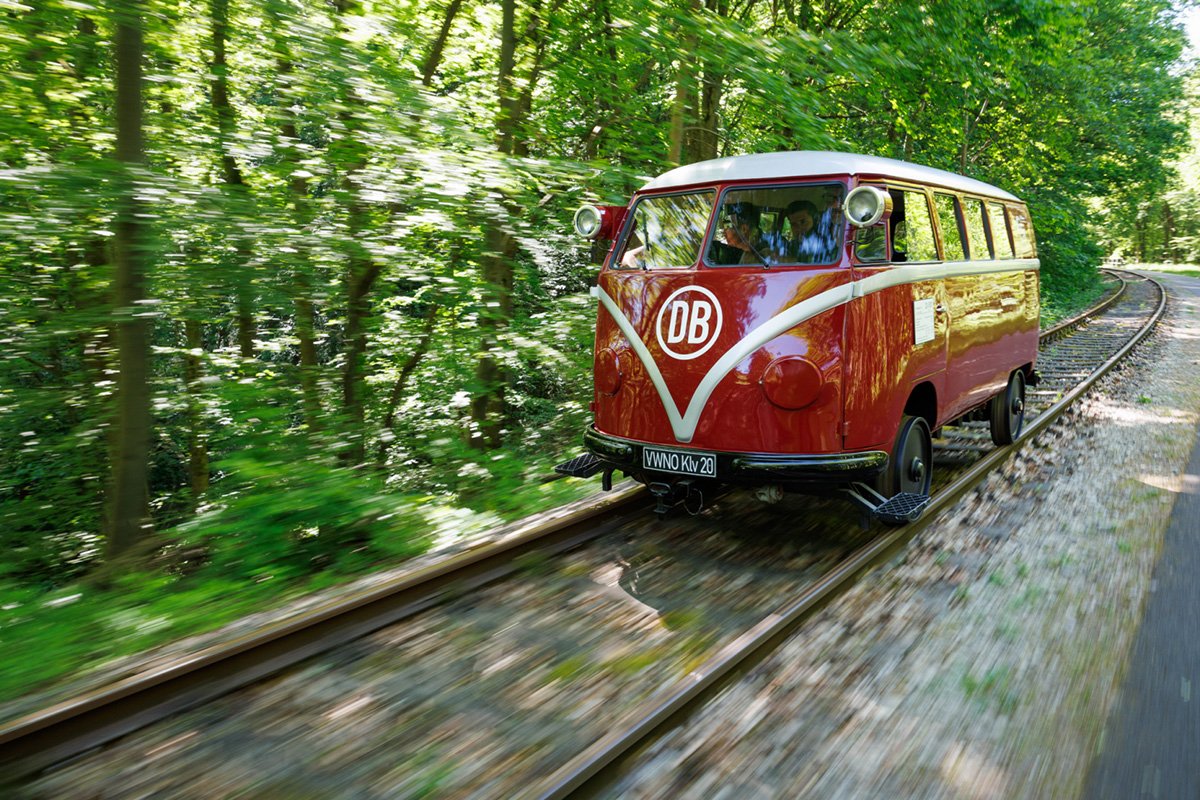
The Klv-20 is not just a relic; it is a functional piece of history that continues to capture the imagination of enthusiasts and historians alike. Its presence in the Volkswagen Commercial Vehicles collection is a reminder of the brand’s rich legacy and its commitment to preserving automotive history.
From past to present
The Klv-20’s journey from a service vehicle in Bavaria to a prized collectible in Hanover is a story of preservation and passion. Each phase of its life—from its early days on the rails, through its time with a railway collector, to its current status as a museum piece—reflects the dedication of those who understand the value of maintaining historical artifacts. This vehicle is more than just a means of transport; it is a bridge connecting the past with the present, offering insight into the ingenuity of mid-20th-century engineering.
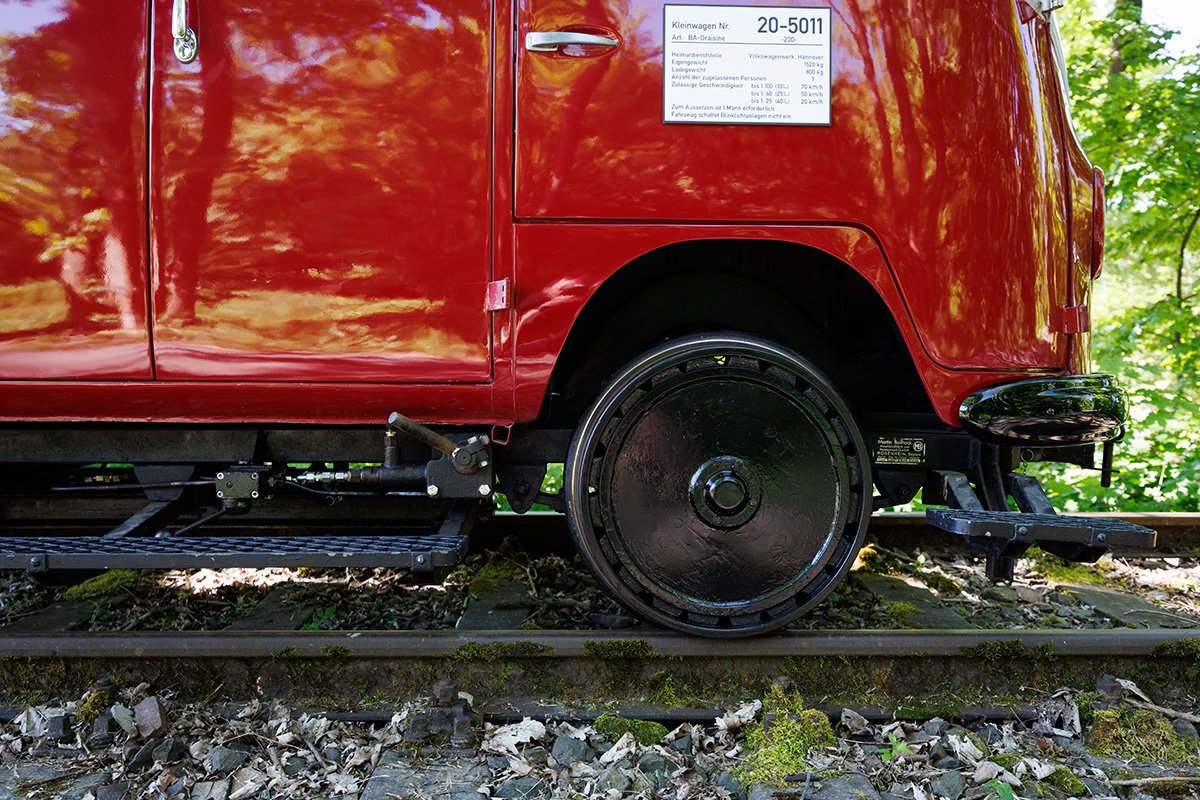
A unique experience
Experiencing the Klv-20 firsthand provides a tangible connection to history. The vehicle’s lack of a traditional steering wheel and rearview mirror may initially disorient drivers, but the steady rhythm of the rail journey quickly becomes second nature. The Klv-20’s first modern outing, traversing the draisine track in Lengenfeld unterm Stein, was a testament to its enduring functionality and charm. As described by Tobias Twele, the team’s emotional drive over the 24-meter-high viaduct was a highlight, marking a memorable moment in the Klv-20’s storied existence.
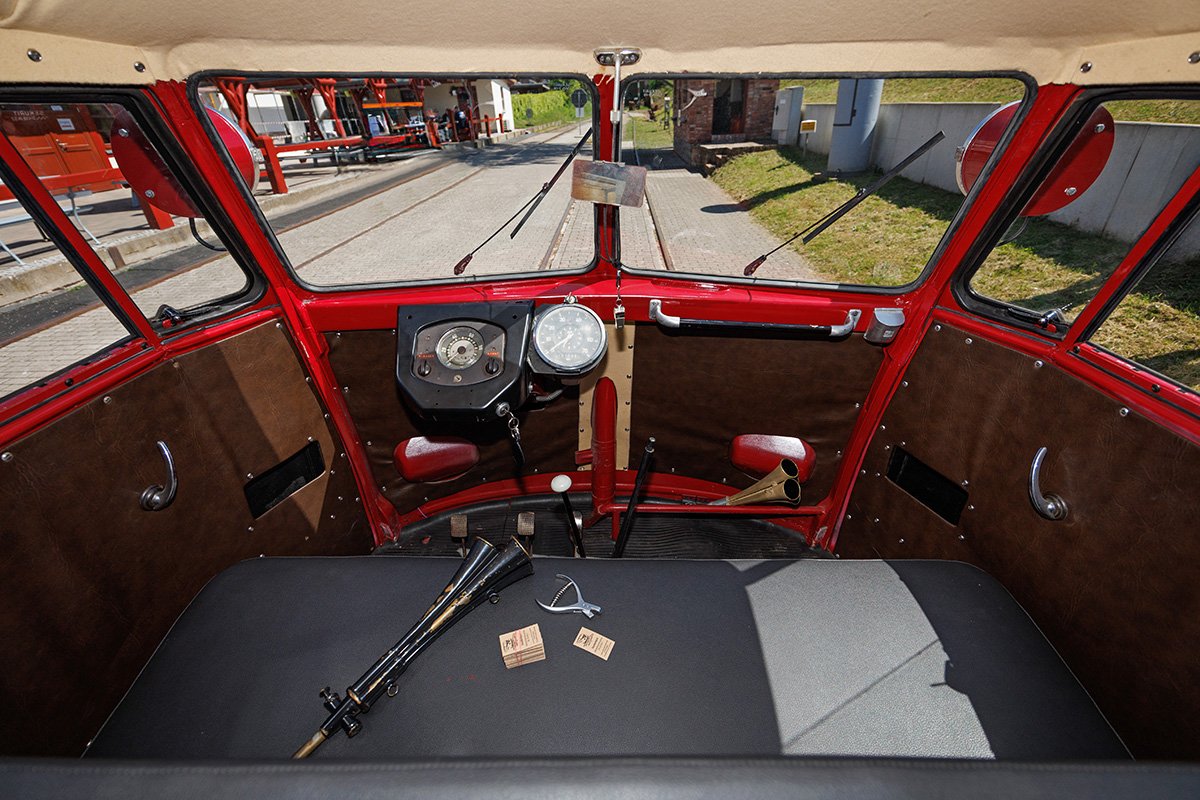
Showcase event
Enthusiasts had the opportunity to see the Klv-20 and other highlights from the VWNO collection at the Bulli & Coffee meeting in Hanover on June 2, 2024. This event, held in honor of International VW Bus Day, brought together fans of the iconic Volkswagen Bus for a morning of shared stories and mutual admiration. With no formal program, the focus was purely on the vehicles and the passion they inspire.
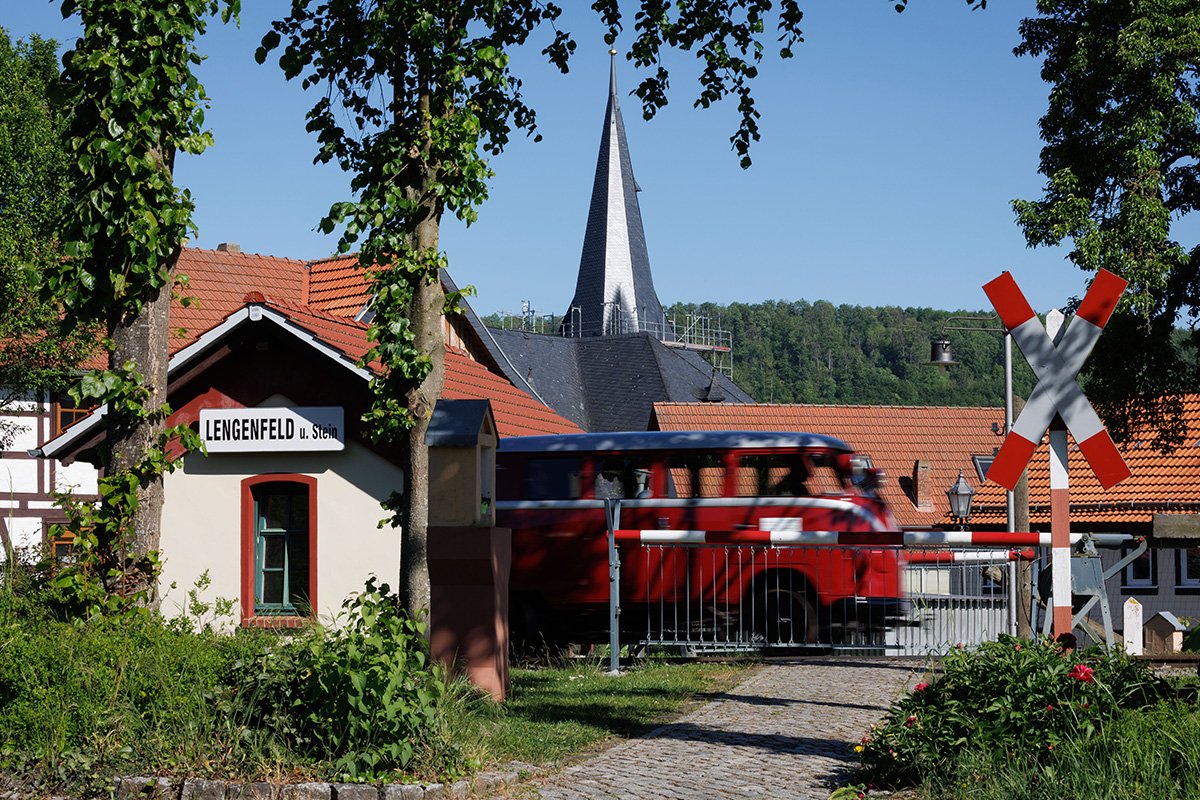
The Bulli legacy
The Klv-20 rail bus is an exceptional example of Volkswagen’s ability to innovate and adapt its designs for various uses. Its creation was driven by necessity, yet it stands out today as a unique and fascinating part of automotive history. The continued interest in and preservation of such vehicles highlight the timeless appeal of the Volkswagen Bulli and its place in the hearts of enthusiasts worldwide.
Source: Volkswagen Commercial Vehicles

